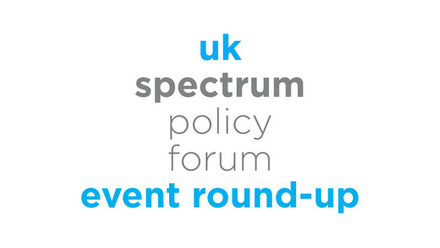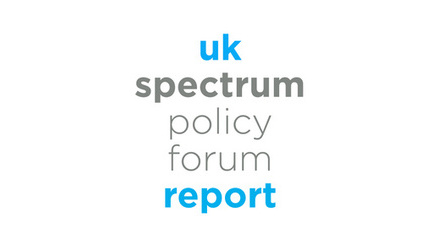UK SPF Cluster 3 event round up: spectrum for CNI and transport
The UK SPF Cluster 3 was pleased to host stakeholders for a timely discussion on Spectrum use cases for Critical National Infrastructure (CNI) and Transport. Participants explored the strategic policy landscape surrounding spectrum allocation and management, with a particular focus on government-led coordination, regulatory challenges, and the urgent need for cross-sector alignment to support vital infrastructure sectors.
The conversation unfolded against a backdrop of evolving policy initiatives, including Ofcom’s recent call for inputs, the National Infrastructure Commission’s recommendations, and the UK Infrastructure Strategy led by NISTA. These developments underscore the growing recognition that coordinated spectrum policy is essential to enable digitalisation and resilience across energy, water, and transport sectors.
Strategic Coordination and Policy Challenges
A key theme was the complexity of coordinating spectrum policy across multiple government departments and regulatory bodies. Participants noted the absence of a unified mechanism for spectrum governance, despite ongoing efforts by NISTA, HM Treasury, and other stakeholders to bridge this gap. The lack of streamlined coordination risks delaying critical infrastructure upgrades and undermining the UK’s ability to respond to emerging challenges.
International alignment also emerged as a priority. Stakeholders stressed the importance of harmonising UK spectrum policy with global standards and neighbouring countries to ensure equipment availability and cost-effectiveness. The Future Railway Mobile Communication System (FRMCS) programme was cited as a case in point, with lessons drawn from Germany, Brazil, and other nations that have successfully navigated similar transitions.
Another challenge discussed was the misalignment of regulatory cycles and funding rounds across sectors. This disconnect complicates efforts to synchronise investment decisions, regulatory settlements, and policy objectives—particularly in the context of the energy transition and increasing digitalisation. Participants called for mechanisms to better coordinate timing and policy across sectors.
The group reviewed ongoing and planned initiatives in both transport and energy. In transport, the focus is on digitalising networks, migrating from legacy systems, and meeting operational requirements that drive spectrum demand. A holistic telecoms plan is being developed, encompassing AI use cases, digital twins, open data initiatives, and the migration from GSM-R to FRMCS—all aimed at enabling innovative 5G applications.
Sector-Specific Developments and Spectrum Demands
In the energy sector, the transition from passive to dynamic networks is being driven by the integration of renewables, the need for enhanced operational control, and the growing complexity of supply and demand. Both sectors face significant hurdles in moving away from legacy systems such as 2G, 3G, and PSTN. Work is underway to quantify the benefits of modern telecoms solutions, coordinate across agencies, and ensure resilient, future-proofed connectivity.
Robust business cases and scenario modelling were highlighted as essential tools to inform investment and governance decisions. Participants examined the technical and regulatory aspects of spectrum allocation for both public and private networks, including the challenge of identifying suitable bands and balancing national versus local allocations. Ofcom’s dual role in supporting both public and private networks was discussed, with emphasis on the need for transparent mechanisms to manage competing demands.
Resilience was another focal point, with technical requirements such as power autonomy for operational telecoms discussed in light of incidents like the Iberian Peninsula outage. Sector-specific networks capable of maintaining service during extended power failures were deemed essential.
Governance, Investment, and Next Steps
Governance, financing, and implementation challenges were also explored. The ownership model—whether public, private, or hybrid—was shown to influence investment justification, financing structures, and risk allocation. Examples from Germany’s 450 Connect and the UK’s energy sector illustrated the diversity of approaches and the need for tailored solutions.
Participants agreed on the importance of aligning regulatory frameworks, funding cycles, and policy objectives. Mechanisms such as digitalisation reopeners were proposed to accommodate evolving requirements. Starting with the most critical sectors—such as energy utilities and emergency services—was suggested as a pragmatic approach, drawing on international examples to inform UK strategy.
The meeting concluded with a strong consensus on the need for urgent progress. Stakeholders committed to further engagement, development of clear requirements, and refinement of business cases and governance models. There was broad agreement that adapting regulatory frameworks to support proactive investment and cross-sector synergies is essential for the timely delivery of critical infrastructure. Collaboration with Nista and other bodies will continue to address governance and timing issues in the months ahead.
Slides
Contact us

Tales Gaspar
Tales has a background in law and economics, with previous experience in the regulation of new technologies and infrastructure.

Sophie Greaves
Sophie Greaves is Associate Director for Digital Infrastructure at techUK, overseeing the Communications Infrastructure and Services Programme at techUK, and the UK Spectrum Policy Forum.





